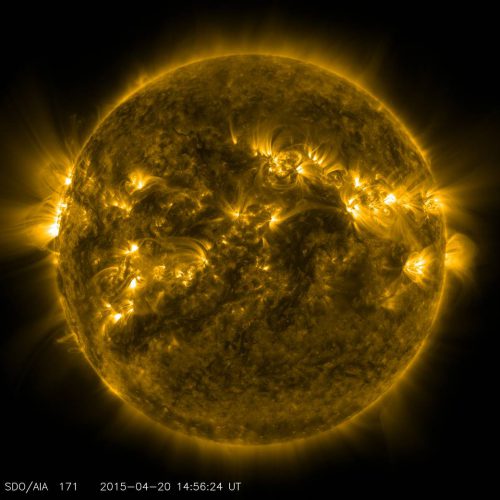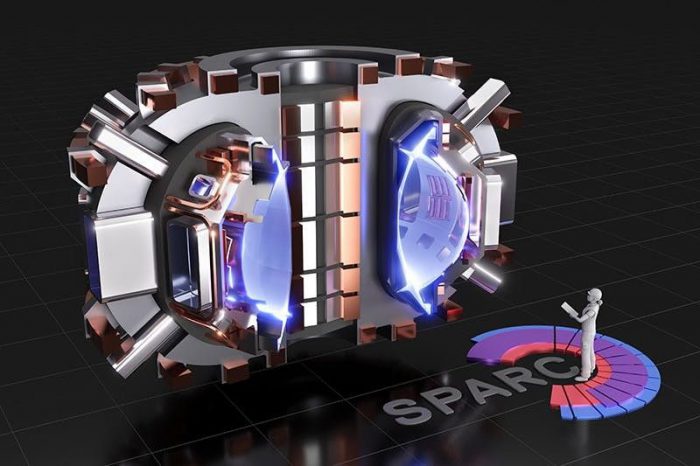A series of new studies say that scientists at the Massachusetts Institutue of Technology (MIT) are close to building a long-awaited breakthrough.
A functioning nuclear fusion reactor.
Called the SPARC (Soonest/Smallest Private-Funded Affordable Robust Compact) reactor, this device could be here as soon as 2025, setting up a future of new green energy.
But don't we already have nuclear reactors?
Well, yes. But those are fission reactors, not fusion reactors. And there's a big difference between the two.
One splits ...
A nuclear fission reactor in India. (Getty Embed)
So far, humans have only mastered nuclear fission. The word 'fission' means to split something into two or more parts. This process takes very large atoms that have hundreds of protons, neutrons, and electrons in them, such as uranium or plutonium. It then fires super high-speed particles at these atoms, splitting them apart. This split releases a tremendous amount of energy, known as a nuclear reaction.
And it is this energy that powers a nuclear reactor, giving us power.
One joins

Say hello to nuclear fusion in action. (NASA)
A fusion reactor would do the opposite. Fusion is the act of joining, or fusing, things together. And there's already a fusion reactor that we're all very familiar with: The Sun!
All stars are nuclear fusion reactors. They use tremendous heat and pressure to force small atoms together into new elements. In this case, the smallest most basic atom of them all—hydrogen—is the fuel. As hydrogen atoms are squeezed together, they have slightly less mass than they did before the fusion. And this is the key.
This extra mass can't just disappear into nothingness—it has to be released as something. In this case, light and heat. And when you multiply that reaction over billions and billions of hydrogens atoms being fused, you get the light and heat that the Sun generates every single second.
Why don't we already use it?
Nuclear fusion has major advantages over fission. Though both methods do not release greenhouse gases, fission does produce radioactive waste. Fusion does not. And while the uranium and plutonium used in fission is rare and dangerous to handle, the fuel for fusion—hydrogen—is plentiful and safe.
So why aren't we already using fusion?
- A fusion reaction requires tons of energy to get started. To perform it on Earth in a reactor, it has to reach temperatures of at least 100 million°C (180 million°F), which is way hotter than even the Sun. And ...
- The fusion reaction is so hot, that we need a material that can withstand it for longer than a few seconds.
Mega magnet power
According to the studies, scientists are convinced that SPARC would solve these problems. It would use brand new high-temperature superconducting magnets to make powerful magnetic fields to squeeze ionized gas, or plasma. The field would also contain the reaction, allowing it to continue for as long as we like.
Though these magnets require an unbelievable amount of energy to get going, once the reaction starts, it would generate twice as much energy in return. And there you have it. Power!
Not so fast
The ITER project in France is another attempt to build a fusion reactor. (Getty Embed)
As cool—or hot—as this sounds, it's hardly a done deal. Making a project like this work is incredibly difficult. For example, another fusion reactor project—the International Thermonuclear Experimental Reactor (ITER)—has been an active project since 2007 and isn't expected to be ready until 2035.
So while MIT scientists are predicting SPARC will be ready in 2025, there could be setbacks.
Also, some experts argue that fusion won't be as clean or reliable as some scientists claim it can be. For them, the amount of energy needed to start—and control—fusion on Earth is too great.
Will we see fusion here on Earth in the near future? If we do, it's safe to say that it will be a big event!
 An illustration showing the cutaway of the proposed SPARC reactor. (© CFS/MIT-PSFC-CAD/T. Henderson)
An illustration showing the cutaway of the proposed SPARC reactor. (© CFS/MIT-PSFC-CAD/T. Henderson)










it’s realy interesting that a simple mashine could save the earth
Well . . . It won’t exactly save the earth, but it will GREATLY reduce greenhouse gasses from electricity.